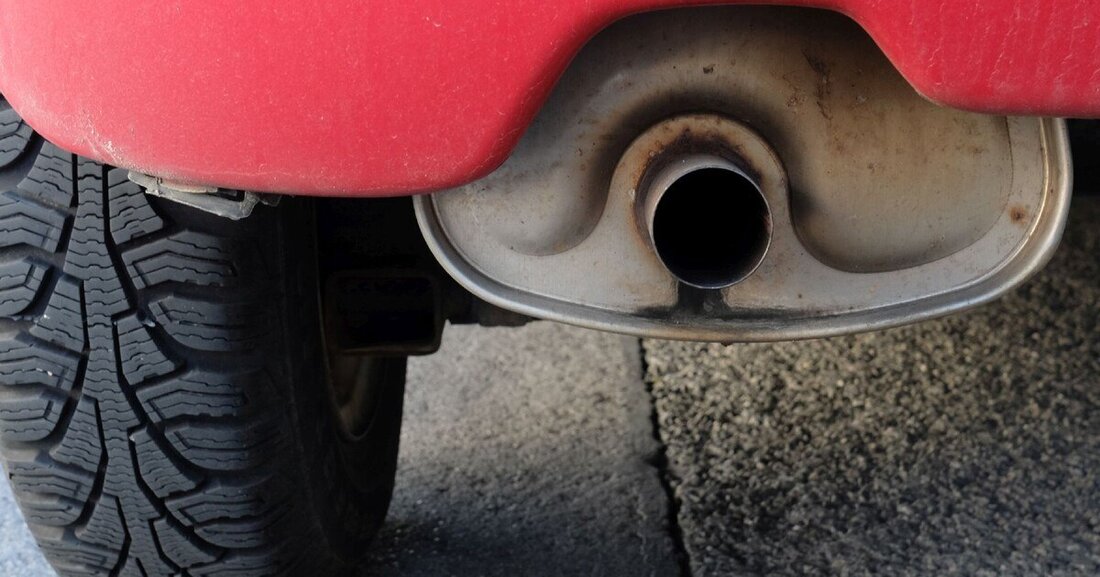Court of Auditors: Car emissions too high
A report from the European Court of Auditors shows: Car emissions have not decreased for 12 years.

Court of Auditors: Car emissions too high
The EU's CO2 reduction targets for new cars cannot be achieved as long as important prerequisites are missing. This emerges from a recently published report by the European Court of Auditors. Despite ambitious goals and strict requirements, most cars on Europe's roads still emit as much CO2 as they did 12 years ago. Electric cars could help the EU on the way to a zero-emission vehicle fleet, but the efforts to achieve this would need to be moved up a gear, say the auditors.
Since 2010, the Passenger Car CO2 Regulation has set an EU-wide target for the average CO2 emissions of all newly registered vehicles. In addition, every manufacturer must show the CO2 emissions of the vehicles in so-called certificates of conformity and pay a levy if they exceed certain emission targets. The requirements have increased over time: no emissions at all should be emitted by 2035. “The EU’s green revolution can only take place if there are significantly fewer polluting vehicles in circulation,” said Pietro Russo, who is responsible for auditing at the Court of Auditors. His conclusion: "The CO2 emissions from vehicles will only really decline when the combustion engine loses its dominant position. However, the electrification of the EU vehicle fleet is very complex." In the 2010s, car manufacturers used loopholes in testing standards to achieve lower emissions in laboratory tests. The difference to the actual emissions generated in practical driving was enormous. Therefore, a new laboratory test cycle that reflects actual driving conditions has been introduced. This effectively reduced, although not eliminated, the difference between the emissions measured in the laboratory and those caused in practical driving.
The actual emissions of conventional cars - which still account for almost three quarters of new registrations - have not decreased, according to the auditors. Over the last ten years, emissions from diesel vehicles have remained constant, while emissions from gasoline vehicles have decreased slightly (-4.6%). Technical advances have made the engines more efficient. However, this is offset by greater vehicle weight (around +10% on average) and higher engine power (around +25% on average). The same applies to hybrid vehicles. In practical driving, they tended to cause significantly higher emissions than those measured in the laboratory. In order to better reflect the actual situation, the proportionate use of electric and combustion engines should be recorded more precisely, but only from 2025. Until then, plug-in hybrids would continue to be treated as low-emission vehicles - to the advantage of car manufacturers. This allows manufacturers to continue to apply some provisions of the CO2 regulation, which saved them almost 13 billion euros in taxes due to excess emissions in 2020 alone.
According to the EU auditors, the decline in average CO2 emissions in practical driving recorded in recent years is entirely due to electric cars (in 2018 only one in a hundred newly registered vehicles was an electric car, in 2022 almost one in seven). But there are still numerous hurdles, as the EU is having considerable difficulty in helping electric cars achieve a breakthrough. The first hurdle is access to raw materials to produce enough batteries, as highlighted in a recently published report by the Court of Auditors. The EU auditors had previously pointed out that the available charging infrastructure was inadequate: 70% of all charging stations for car batteries in the EU were concentrated in just three countries: the Netherlands, France and Germany. Ultimately, the price is crucial: the higher purchase costs for electric cars could encourage consumers to drive their old, environmentally harmful vehicles for longer.
The EU has been able to reduce greenhouse gas emissions in many areas over the last 30 years. However, CO2 emissions caused by traffic have continued to increase. In 2021, it accounted for 23% of all EU greenhouse gas emissions. More than half of these emissions were caused by cars. The Regulation on CO2 emission standards for new cars is the most important EU legal act for reducing CO2 emissions from new cars. It has been in force since 2009 and was significantly amended in 2019. For the purposes of the regulation, the CO2 emissions of individual vehicles are measured under standardized conditions in a laboratory and not on the road. The special report 01/2024 “Reducing CO2 emissions from cars: measures are finally gaining momentum, but challenges still lie ahead” is available on the European Court of Auditors website.

 Suche
Suche
 Mein Konto
Mein Konto